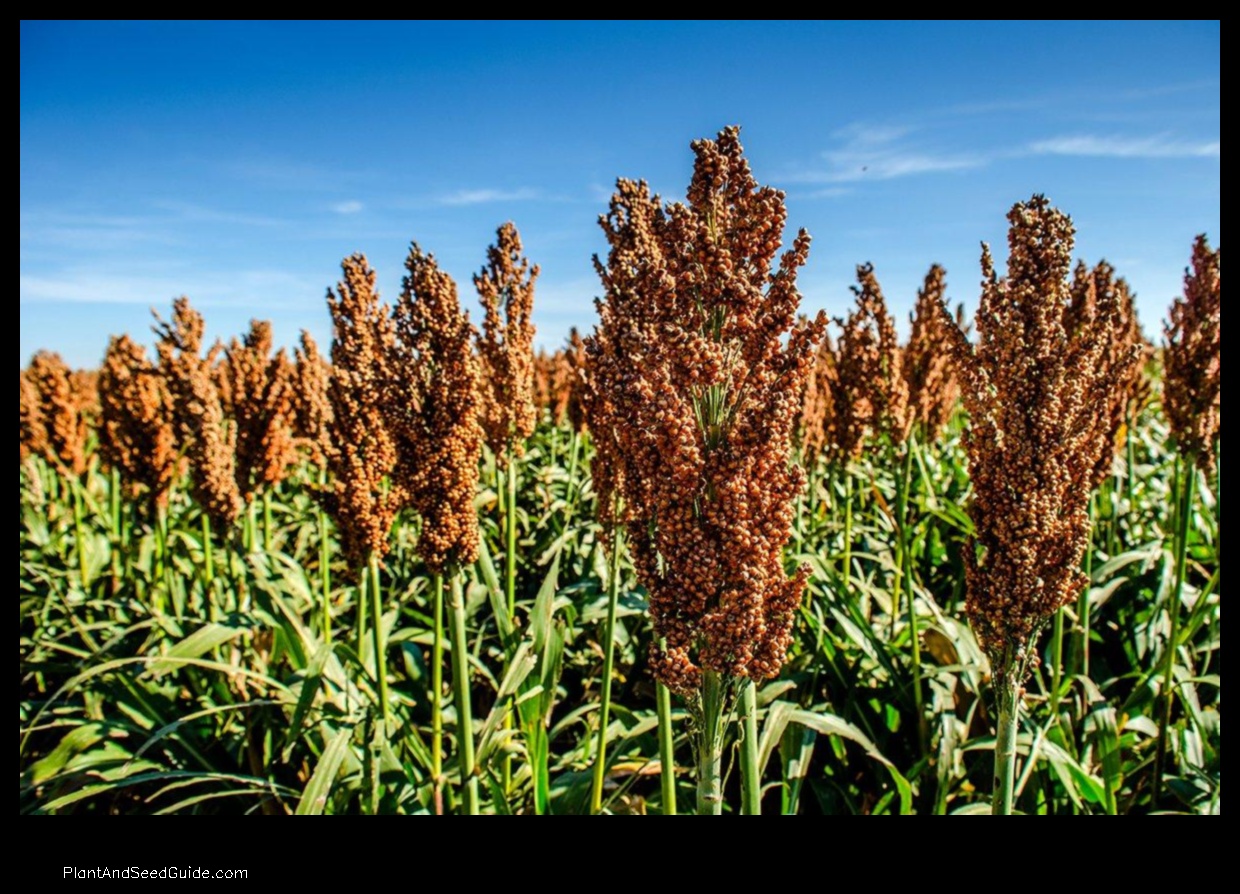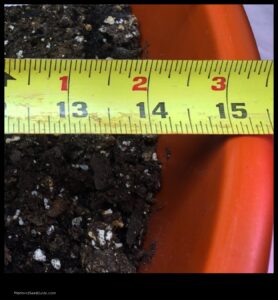
How to Plant Milo
Milo is a type of sorghum that is grown for its grain. It is a drought-tolerant crop that can be grown in a variety of soil conditions. Milo is planted in the spring and harvested in the fall.

Soil Preparation
The soil for milo should be well-drained and have a pH of 6.0 to 7.0. Milo can be grown in a variety of soil types, but it does not do well in heavy clay soils.
Before planting, the soil should be tilled to a depth of 6 inches. If the soil is compacted, it should be loosened with a rototiller or a spading fork.
Planting
Milo is planted in the spring, when the soil has warmed up to 60 degrees Fahrenheit. The seeds are planted 1 inch deep and 6 inches apart.
Milo can be planted by hand or with a seed drill. If you are planting by hand, you should space the rows 3 feet apart. If you are using a seed drill, you should set the spacing according to the manufacturer’s instructions.

Watering
Milo needs regular water during the growing season. The plants should be watered deeply once a week, or more often if the weather is hot and dry.
It is important to avoid overwatering milo, as this can lead to root rot.
Fertilizing
Milo needs fertilizer to produce a good crop. The plants should be fertilized with a balanced fertilizer, such as 10-10-10, at planting time.
Milo may also need to be fertilized again during the growing season, depending on the soil fertility.
Weed Control
Milo can be susceptible to weeds, especially in the early stages of growth. Weeds compete with the milo plants for water, nutrients, and sunlight.
Milo can be weeded by hand or with a herbicide. If you are using a herbicide, be sure to read the label carefully and follow the directions.
Pest Control
Milo can be attacked by a variety of pests, including insects, diseases, and rodents.
Insects that can damage milo include aphids, grasshoppers, and corn borers. Diseases that can affect milo include rust, smut, and wilt. Rodents can also damage milo crops by eating the seeds.
If you suspect that your milo crop is being damaged by pests, you should contact your local extension agent for help.
Harvesting
Milo is harvested in the fall, when the grain is mature. The plants are cut with a combine harvester and the grain is separated from the stalks.
The grain can be stored in a silo or in a grain bin.
Storage
Milo grain can be stored for long periods of time. The grain should be kept in a cool, dry place.
Milo grain can be used to make a variety of products, including livestock feed, ethanol, and syrup.
FAQ
Q: What is the best time to plant milo?
A: Milo is planted in the spring, when the soil has warmed up to 60 degrees Fahrenheit.
Q: What is the ideal soil pH for milo?
A: The ideal soil pH for milo is 6.0 to 7.0.
Q: How much water does milo need?
A: Milo needs regular water during the growing season. The plants should be watered deeply once a week, or more often if the weather is hot and dry.
Q: What fertilizer does milo need?
A: Milo needs a balanced fertilizer, such as 10-10-10, at planting time.
</
| Topic | Milo Planting | Milo Growing | Milo Crop | Milo Field | Milo Harvest |
|---|---|---|---|---|---|
| Answer the topic in plain text | Answer the topic in plain text | Answer the topic in plain text | Answer the topic in plain text | Answer the topic in plain text | |
| Soil Preparation | Answer the topic in plain text | Answer the topic in plain text | Answer the topic in plain text | Answer the topic in plain text | Answer the topic in plain text |
| Planting | Answer the topic in plain text | Answer the topic in plain text | Answer the topic in plain text | Answer the topic in plain text | Answer the topic in plain text |
| Watering | Answer the topic in plain text | Answer the topic in plain text | Answer the topic in plain text | Answer the topic in plain text | Answer the topic in plain text |
| Fertilizing | Answer the topic in plain text | Answer the topic in plain text | Answer the topic in plain text | Answer the topic in plain text | Answer the topic in plain text |
| Weed Control | Answer the topic in plain text | Answer the topic in plain text | Answer the topic in plain text | Answer the topic in plain text | Answer the topic in plain text |
| Pest Control | Answer the topic in plain text | Answer the topic in plain text | Answer the topic in plain text | Answer the topic in plain text | Answer the topic in plain text |
| Harvesting | Answer the topic in plain text | Answer the topic in plain text | Answer the topic in plain text | Answer the topic in plain text | Answer the topic in plain text |
| Storage | Answer the topic in plain text | Answer the topic in plain text | Answer the topic in plain text | Answer the topic in plain text | Answer the topic in plain text |
| FAQ | Answer the topic in plain text | Answer the topic in plain text | Answer the topic in plain text | Answer the topic in plain text | Answer the topic in plain text |
ISoil Preparation
The first step in planting milo is to prepare the soil. Milo is a heavy feeder, so it needs a soil that is rich in nutrients. The ideal soil pH for milo is between 6.0 and 7.0.
To prepare the soil, you will need to remove any weeds or debris.
If the soil is compacted, you may need to loosen it up with a rototiller or a spading fork.You will also need to till the soil to a depth of 6 inches..
Once the soil is prepared, you can apply a fertilizer according to the package directions. Milo needs a lot of nitrogen, so you will need to apply a fertilizer that is high in nitrogen.
Planting
Milo can be planted in the spring or fall, but spring planting is more common in most areas. The ideal soil temperature for planting milo is between 60 and 70 degrees Fahrenheit.
Milo seeds should be planted 1 to 2 inches deep in rows that are 3 to 4 feet apart. The spacing between plants within the rows should be 6 to 8 inches.
Milo seedlings should emerge within 7 to 10 days after planting.
Watering
Milo needs regular watering throughout the growing season, especially during periods of drought. The amount of water needed will vary depending on the climate and the soil conditions. In general, milo should be watered deeply once or twice a week.
It is important to water milo deeply so that the water reaches the roots. If the water only reaches the surface of the soil, the roots will not be able to absorb enough water and the plant will suffer.
Milo can be watered by hand, with a hose or sprinkler, or by drip irrigation. Drip irrigation is the most efficient way to water milo, as it ensures that the water is delivered directly to the roots.
When watering milo, it is important to avoid overwatering. Overwatering can lead to root rot and other problems. It is also important to avoid watering milo at night, as this can increase the risk of fungal diseases.
The best time to water milo is in the morning, before the sun has had a chance to heat up the soil. This will help to prevent the water from evaporating and will also help to cool the roots of the plant.
Milo should be watered until the soil is saturated to a depth of 6 inches. The frequency of watering will depend on the weather conditions. During periods of drought, milo may need to be watered more frequently.
Fertilizing
Fertilizing milo is important for ensuring that the plants have the nutrients they need to grow and produce a healthy crop. The type of fertilizer that you use will depend on the soil conditions in your area, as well as the specific variety of milo that you are growing.
Generally speaking, milo plants require a balanced fertilizer that contains nitrogen, phosphorus, and potassium. Nitrogen is essential for plant growth, phosphorus helps to promote root development, and potassium helps to improve the overall health of the plant.
You should apply fertilizer to your milo crop at least twice during the growing season: once in the spring and once in the summer. The amount of fertilizer that you use will depend on the specific fertilizer that you are using, as well as the size of your milo crop.
It is important to follow the directions on the fertilizer label carefully, as using too much fertilizer can damage your milo plants.
Fertilizing milo can help to increase yields and improve the quality of your crop. By following these tips, you can ensure that your milo plants are getting the nutrients they need to thrive.
VWeed Control
Weeds compete with milo for water, nutrients, and sunlight. They can also harbor pests and diseases. To control weeds, you can use a combination of cultural, mechanical, and chemical methods.
Cultural methods of weed control include:
- Rotate crops
- Till the soil deeply
- Keep the crop rows clean
- Sow seeds at the correct depth
Mechanical methods of weed control include:
- Hand weeding
- Flaming
- Harvesting early
Chemical methods of weed control include:
- Herbicides
- Fungicides
- Insecticides
When choosing a weed control method, it is important to consider the following factors:
- The type of weed
- The stage of growth of the weed
- The environmental conditions
- The cost of the method
By using a combination of cultural, mechanical, and chemical methods, you can effectively control weeds in your milo crop.
Pest Control
Milo is susceptible to a variety of pests, including insects, diseases, and weeds. It is important to monitor your crop for pests and take steps to control them if necessary.
Insects that can damage milo include aphids, armyworms, corn borers, grasshoppers, and leafhoppers. Aphids feed on the leaves of milo, causing them to wilt and turn yellow. Armyworms feed on the leaves and stems of milo, causing them to die. Corn borers feed on the stalks of milo, causing them to weaken and eventually collapse. Grasshoppers feed on the leaves and stems of milo, causing them to wilt and die. Leafhoppers feed on the leaves of milo, causing them to turn yellow and eventually die.
Diseases that can damage milo include corn smut, downy mildew, and northern corn leaf blight.
Downy mildew is a fungal disease that causes the leaves of milo to turn yellow and eventually die. Northern corn leaf blight is a fungal disease that causes the leaves of milo to turn brown and eventually die.Corn smut is a fungal disease that causes tumors to grow on the ears of milo..
Weeds that can compete with milo for water, nutrients, and sunlight include crabgrass, foxtail, and pigweed. Crabgrass is a perennial weed that can grow up to 3 feet tall. Foxtail is a perennial weed that can grow up to 2 feet tall. Pigweed is an annual weed that can grow up to 3 feet tall.
To control pests on milo, you can use a variety of methods, including cultural controls, biological controls, and chemical controls. Cultural controls include crop rotation, tillage, and irrigation. Biological controls include the use of beneficial insects and microorganisms. Chemical controls include the use of insecticides, fungicides, and herbicides.
It is important to choose the appropriate pest control method for your specific situation. Cultural controls are the most environmentally friendly and sustainable option, but they may not be effective enough to control severe pest infestations. Biological controls can be effective in controlling pests, but they can be difficult to implement. Chemical controls are the most effective way to control pests, but they can be harmful to the environment and human health.
When choosing a pest control method, you should consider the following factors: the type of pest, the severity of the infestation, the environmental impact of the control method, and the cost of the control method.
Harvesting
Milo is ready to harvest when the kernels are dry and the leaves have turned brown. The best time to harvest is when the moisture content of the kernels is between 18% and 22%.
To harvest milo, use a combine harvester to cut the stalks and separate the kernels from the cobs. The kernels can then be stored for later use or processed into feed or livestock feed.
Harvesting milo is a labor-intensive process, but it is essential to ensure that the crop is harvested at the right time to maximize yield and quality.</p
Storage
Milo can be stored for long periods of time if it is properly dried and cured. The best way to store milo is in a cool, dry place with good air circulation. The grain should be kept in a bin or bag that is rodent-proof. Milo can also be stored in a silo.
To dry milo, it is important to spread the grain out in a thin layer and allow it to air dry. The grain should be turned frequently to ensure that it dries evenly. Milo can also be dried in a dryer.
Once the milo is dry, it should be cured for several weeks.
Milo can be cured in a bin or bag, or it can be spread out in a thin layer on the ground.Curing helps to improve the quality of the grain and prevents it from spoiling..
Milo can be stored for up to one year if it is properly dried and cured.
FAQ
Q: What is the best time to plant milo?
A: The best time to plant milo is in the spring, after the last frost.
Q: What are the ideal soil conditions for milo?
A: Milo grows best in well-drained soil with a pH of 6.0 to 7.0.
Q: How much space should I leave between plants?
A: You should leave about 2 feet of space between plants.
- Wild Rose Country: Exploring Untamed Beauty - July 15, 2024
- Wildflower Nursery Decor: Bringing Nature Indoors - July 15, 2024
- Young Sprout of Grass: Nurturing New Life - July 15, 2024









